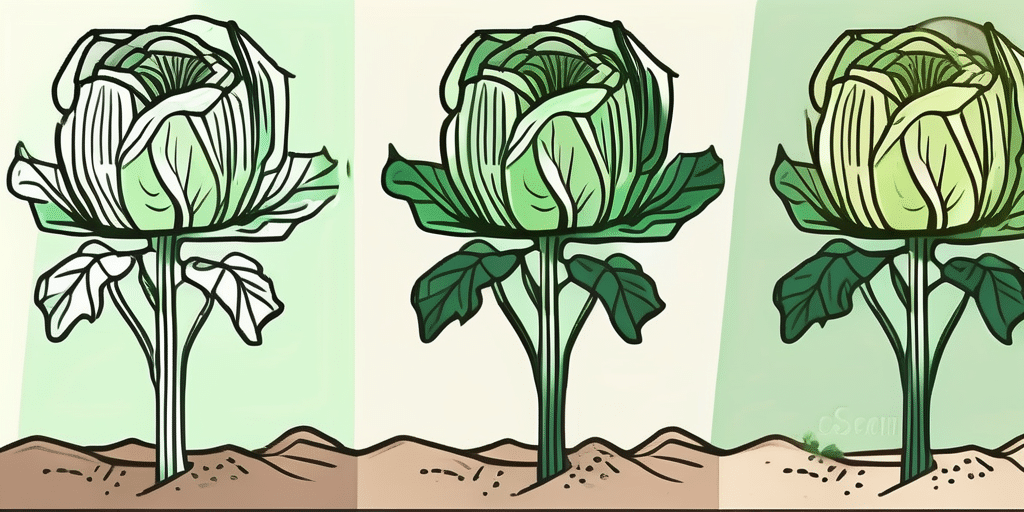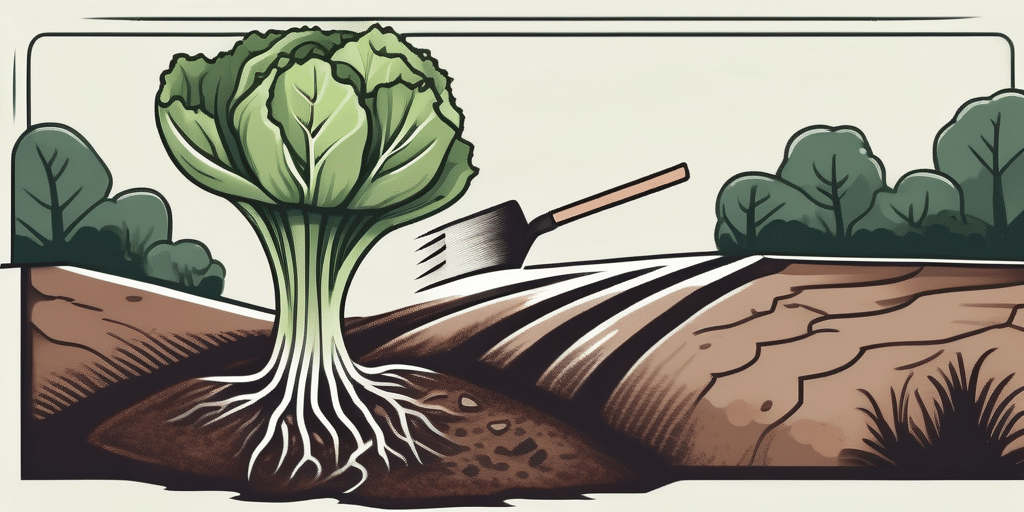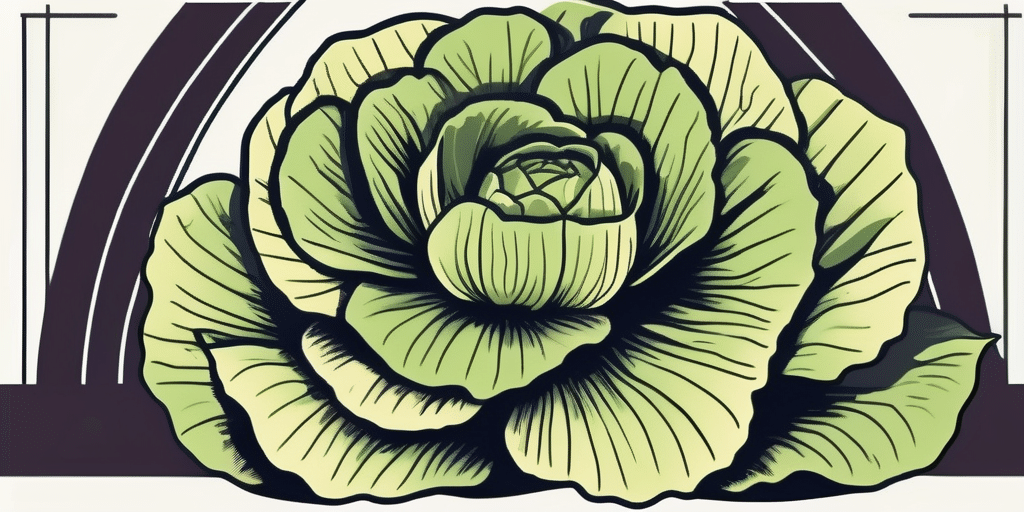Cabbage is a nutritious and versatile vegetable that can be easily grown in Virginia. Whether you’re an experienced gardener or a beginner, this article will provide you with all the information you need to successfully grow cabbage in the beautiful state of Virginia. From when to plant the seeds to how to harvest the cabbage heads, we’ve got you covered. So grab your gardening tools and get ready to dig in!
Best Cabbage Varieties for Virginia
Before we dive into the details of growing cabbage, let’s take a look at some of the best cabbage varieties that are well-suited for the Virginia climate. These varieties have been selected for their ability to thrive in the region’s specific conditions:
- Early Jersey Wakefield: This heirloom variety is known for its early maturity and delicious flavor. It forms compact heads that are perfect for small gardens.
- Red Express: If you’re looking to add a pop of color to your garden, this vibrant red cabbage variety is an excellent choice. It has a sweet flavor and holds up well in cooking.
- Savoy King: This variety produces beautiful crinkled leaves and has a mild, sweet flavor. It’s a great choice for both fresh eating and cooking.
When considering cabbage varieties for your Virginia garden, it’s important to also think about factors such as soil quality, sunlight exposure, and pest resistance. Early Jersey Wakefield, for example, thrives in well-drained, fertile soil and requires at least 6 hours of sunlight daily. Red Express, on the other hand, is known for its resistance to common cabbage pests like aphids and cabbage worms.
Another noteworthy cabbage variety to consider for Virginia is the Copenhagen Market. This variety is prized for its round, solid heads that are perfect for making coleslaw or sauerkraut. With a good balance of sweetness and crunch, Copenhagen Market is a favorite among home gardeners in the region.
Now that you have an idea of the cabbage varieties that thrive in Virginia, let’s move on to the next important topic: climate and hardiness zones.
Climate & Hardiness Zones in Virginia
Virginia has a diverse climate, with different regions characterized by various temperatures and precipitation levels. Understanding your specific hardiness zone is essential for successful cabbage growing. The zones commonly recognized in Virginia are:
- Zone 6: This zone covers northern Virginia and parts of the Blue Ridge Mountains. It experiences cold winters and moderate summers.
- Zone 7: Central and southern Virginia fall under this zone. It has mild winters and hot summers.
- Zone 8: The coastal areas of Virginia, including cities like Norfolk and Virginia Beach, are in this zone. It has mild winters and hot, humid summers.
Knowing your hardiness zone will help you determine the optimal time to plant cabbage starts or seeds in your area. Let’s explore the ideal planting time for cabbage in Virginia.
Virginia’s climate is influenced by a variety of factors, including its proximity to the Atlantic Ocean, the Appalachian Mountains, and the Chesapeake Bay. These geographical features contribute to the state’s diverse microclimates, making it important for gardeners to be aware of their specific hardiness zone.
In addition to cabbage, Virginia’s climate is suitable for a wide range of crops, including tomatoes, peppers, and squash. The state’s long growing season, which typically lasts from early spring to late fall, provides ample opportunities for gardeners to experiment with different varieties of vegetables and fruits.
When to Plant Cabbage in Virginia
The ideal time to plant cabbage in Virginia depends on your hardiness zone:
- Zone 6: Start cabbage seeds indoors 6-8 weeks before the last spring frost date. Transplant seedlings into the garden 2-3 weeks before the last frost, or sow seeds directly in the garden 2-4 weeks before the last frost. You can also plant a fall crop by starting seeds indoors in late spring and transplanting them outdoors in mid-summer.
- Zone 7: Start cabbage seeds indoors 4-6 weeks before the last spring frost date. Transplant seedlings into the garden 2-3 weeks before the last frost, or sow seeds directly in the garden 1-2 weeks before the last frost. You can also plant a fall crop by starting seeds indoors in early summer and transplanting them outdoors in late summer.
- Zone 8: Start cabbage seeds indoors 4-6 weeks before the last spring frost date. Transplant seedlings into the garden 1-2 weeks before the last frost, or sow seeds directly in the garden a few weeks before the last frost. To grow cabbage in fall, start seeds indoors in mid-summer and transplant them outdoors in late summer.
By following these planting guidelines, you’ll give your cabbage plants the best chance to thrive in the Virginia climate. Now, let’s move on to the exciting part – harvesting your homegrown cabbage!
When it comes to harvesting cabbage, timing is key. Cabbage is ready to harvest when the heads feel firm to the touch and are of a good size, typically around 6-8 inches in diameter. To harvest, simply cut the cabbage head at the base, leaving a few outer leaves intact to protect the inner head during storage.
Once harvested, cabbage can be stored in the refrigerator for up to two weeks. For longer storage, consider fermenting or pickling your cabbage to enjoy its tangy flavors in dishes like sauerkraut or kimchi. Cabbage is not only delicious but also packed with nutrients, including vitamin C, vitamin K, and fiber, making it a valuable addition to your diet.
When to Harvest or Pick Cabbage in Virginia
After months of careful nurturing, your cabbage plants are finally ready to be harvested. The timing of cabbage harvest will depend on the variety you chose and your personal preference for size and maturity. Here are some general guidelines:
- Early varieties: These are ready for harvest in about 50-60 days from transplanting or 70-80 days from sowing the seeds. Harvest the heads when they reach their desired size, usually around 4-6 inches in diameter.
- Late varieties: These take longer to mature, usually ranging from 80-110 days from transplanting or 100-140 days from sowing the seeds. Harvest the heads when they reach their full size, which can be 6-10 inches in diameter.
To harvest cabbage, simply use a sharp knife to cut the head off at the base, leaving a few outer leaves intact. After harvesting, store your cabbage in a cool, dry place or refrigerate it to retain its freshness and crunchiness.
Frequently Asked Questions
As we conclude this article about growing cabbage in Virginia, let’s address a few frequently asked questions to provide you with some additional insights:
1. Can I grow cabbage in containers?
Yes, you can definitely grow cabbage in containers as long as the container is deep enough to accommodate the roots and provides adequate drainage.
2. How often should I water my cabbage plants?
Cabbage plants require regular watering, especially during hot and dry periods. Aim to keep the soil evenly moist, but not waterlogged.
3. Are there any common pests or diseases that I should be aware of?
Cabbage plants are susceptible to pests such as aphids, cabbage loopers, and cabbage worms. It’s important to monitor your plants regularly and take appropriate measures, such as using organic insecticides or introducing beneficial insects like ladybugs.
Now that you have all the information you need, it’s time to start your cabbage-growing adventure in Virginia! Enjoy the process and savor the taste of your homegrown cabbage.
Join Our Gardening Community
Ready to take your cabbage-growing journey to the next level? Subscribe for free to How to Grow Everything and learn how to build the garden of your dreams! Receive personalized gardening advice tailored to your Virginia location, grow zone, and experience level. Our family is dedicated to helping you succeed in your gardening endeavors with the best tips and special offers, all delivered directly to your inbox. Join our community today and grow with confidence!





